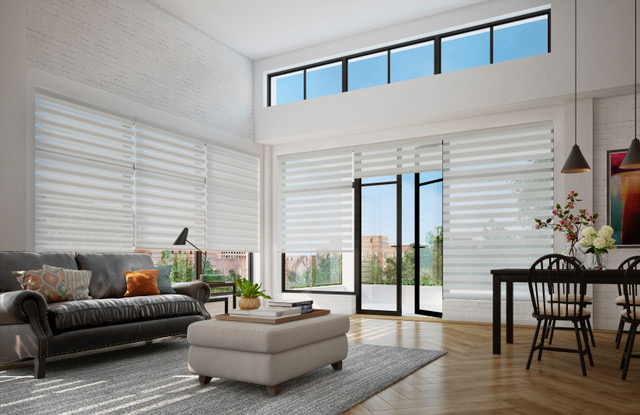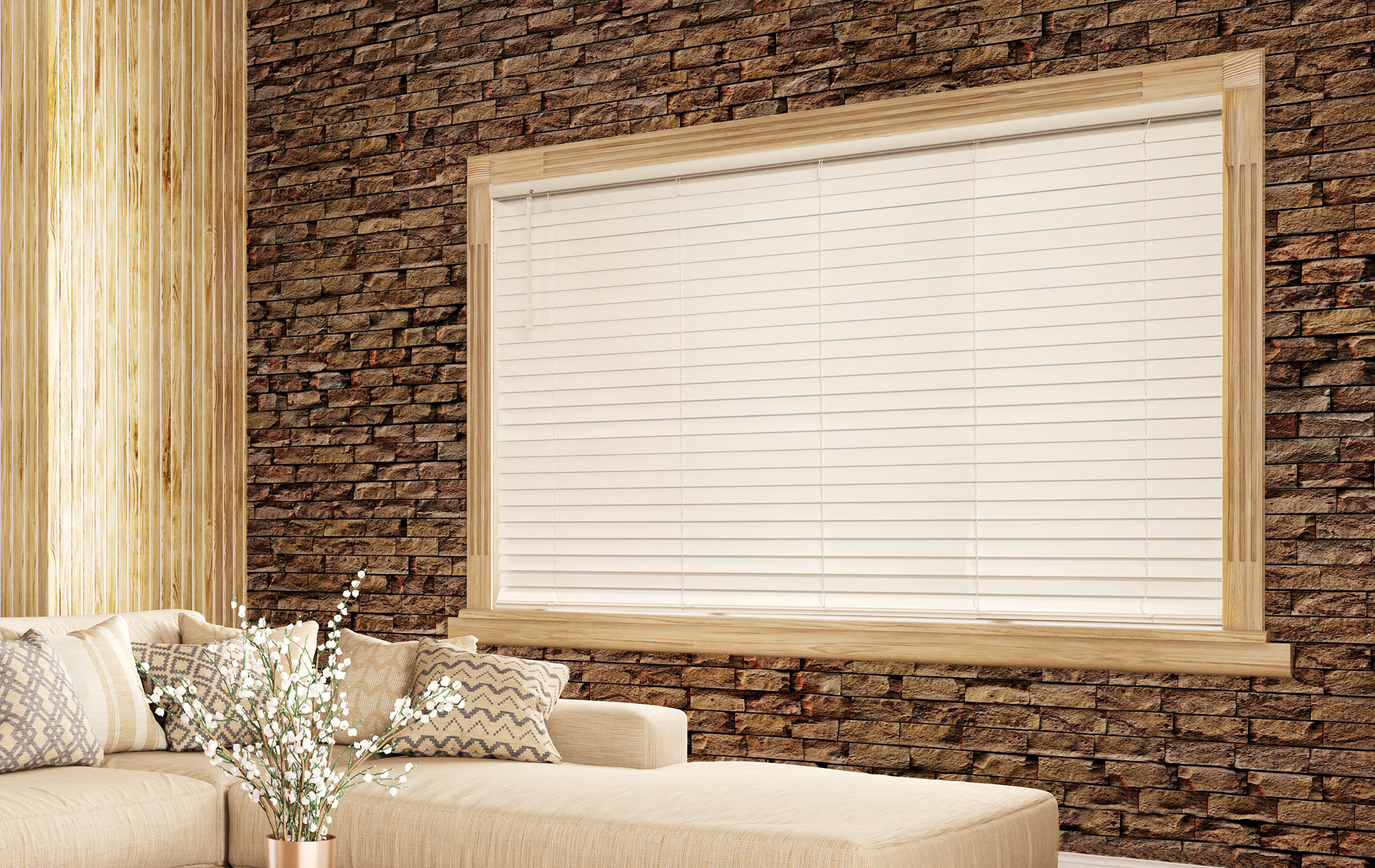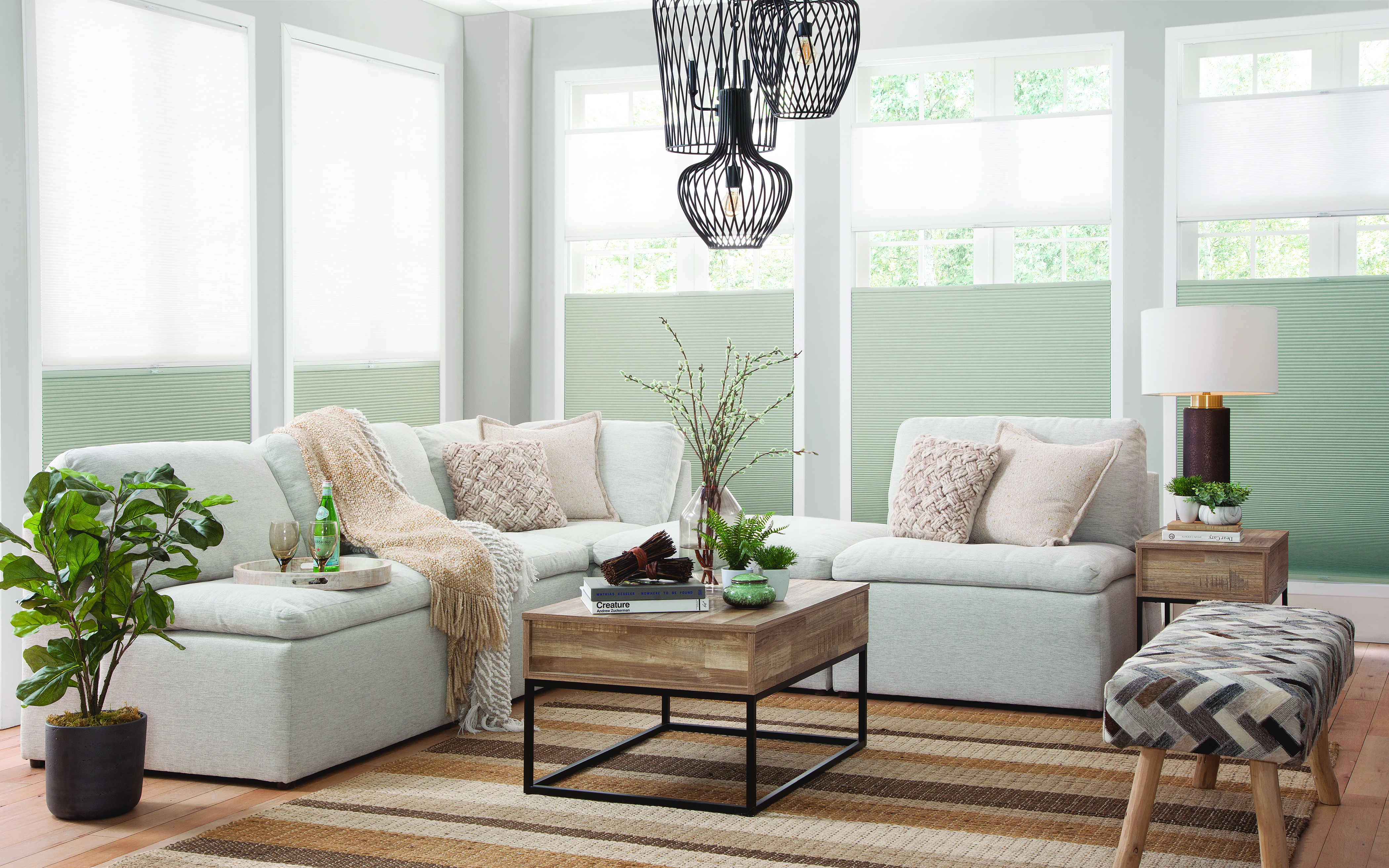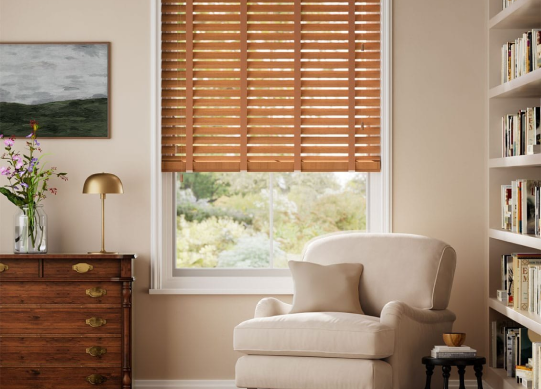
You've just received the keys to your dream home.
The floors gleam. The walls stand pristine. Everything smells like possibility.
But those bare windows? They're practically screaming for attention.
Here's the thing about new construction homes in Monmouth County and Middlesex County: they're blank canvases waiting for your personal touch. And nothing transforms a space quite like the right window treatments.
Whether you're settling into Jackson Township, making your mark in Lakewood, or calling Clark or Cranford home, your windows deserve more than an afterthought.
Why New Construction Homes Need Strategic Window Treatment Planning
New homes come with promise, but they often lack personality.
Your builder focused on structure, systems, and safety. Now it's your turn to create comfort, style, and efficiency.
Smart window treatments in 2025 aren’t just about looks — they’re about programming your home for security, comfort, and energy savings (because, let’s be honest, utility bills aren’t getting any lower).
Think about it. Every morning, sunlight streams through your unprotected windows. Every evening, your privacy vanishes with the sunset. Every month, your energy bills reflect heat loss and gain through untreated glass.
Window treatments solve these problems elegantly.
Understanding Your Local Climate: Monmouth and Middlesex County Considerations
Living near the Jersey Shore means dealing with unique weather patterns.
If you’ve lived here through one August, you know that summer sun can be relentless. And Middlesex County winters? Those winds don’t mess around. Add in our shore-town humidity, and comfort can be a real balancing act.
Your window treatments need to work with these conditions, not against them.
Summer Challenges in Coastal New Jersey
Mornings in Jackson Township can feel like a spotlight’s on your living room. By the afternoon, those west-facing Lakewood windows? Instant sauna.
Solar roller shades offer a minimalist, modern aesthetic while providing essential light control and energy efficiency benefits.
Consider cellular shades for south-facing windows. Their honeycomb structure traps air, creating an insulation barrier that keeps cool air in during those brutal August days.
Winter Weather Protection
Clark and Cranford residents face different challenges when winter arrives.
Even the best new construction windows can’t fully stop that bone-chilling draft. A little extra insulation from the right treatments can make the difference between “cozy” and “where’s my sweater?”
Motorized shutters provide the ultimate protection. They seal tight against window frames, creating dead air space that dramatically improves thermal performance.
The Smart Home Revolution: 2025 Window Treatment Technology
Smart curtains, motorized shades, and automated blinds are redefining convenience in 2025, integrating with smart home systems to control natural light, privacy, and temperature with voice commands.
Your new construction home likely came pre-wired for smart technology. Why not extend that intelligence to your windows?
Automated Scheduling for Energy Efficiency
Program your shades to close during peak sun hours. Set them to open when you wake up. Create evening privacy routines that activate with a single command.
The energy savings add up quickly. Automated shades can reduce cooling costs by up to 30% during summer months.
Voice Control Integration
"Alexa, close the bedroom shades." "Google, set the living room to 50% light."
These aren't futuristic dreams, they're today's reality for homeowners who choose wisely.
Material Matters: Choosing Window Treatments That Last in New Jersey
Not all window treatments handle humidity well.
Not all fabrics resist fading from coastal sun exposure.
Not all materials are tough enough to handle New Jersey’s mood swings — sunny one day, freezing the next.
Natural Materials with Modern Performance
Wood blinds bring warmth but need proper sealing for bathroom and kitchen applications. Bamboo offers sustainability with natural moisture resistance.
Faux wood alternatives provide real wood appearance with superior durability. They won't warp, crack, or fade, perfect for high-humidity areas common in Middlesex County.
High-Performance Fabrics
Modern roller shade fabrics do more than just look good.
Light-filtering options maintain privacy while preserving natural light. Blackout materials create perfect sleeping environments for shift workers or light-sensitive residents.
Room-darkening fabrics offer middle-ground solutions, reducing glare without complete darkness.
Room-by-Room Window Treatment Strategy for New Homes
Each space in your home serves different purposes.
Your window treatments should reflect these functional differences while maintaining overall design cohesion.
Living Areas: Balancing Light and Privacy
Open floor plans in new construction homes create unique challenges.
Large windows flood spaces with light but can create privacy concerns. In Jackson Township neighborhoods, homes are often cozy-close — meaning privacy matters.
Layered treatments are the ultimate multitaskers — handling glare, privacy, and style all at once.
Start with solar shades for daytime glare control. Add decorative panels for evening privacy. Include motorization for effortless daily adjustments.
Bedrooms: Creating Restful Retreats
Quality sleep requires light control.
Blackout cellular shades eliminate light pollution from street lamps and early morning sun. Their insulation properties also reduce outside noise—crucial for homes near busy Middlesex County roads.
Top-down, bottom-up operation lets you maintain privacy while allowing natural light at ceiling level.
Kitchen and Bath Areas: Moisture-Resistant Solutions
New construction bathrooms feature excellent ventilation, but humidity still poses challenges.
Vinyl or aluminum blinds handle moisture without warping. Roller shades with moisture-barrier backing prevent mold and mildew issues.
Avoid natural materials in these spaces unless specifically treated for high-humidity applications.
Home Offices: Reducing Screen Glare
Working from home has become standard for many Monmouth County professionals.
Screen glare destroys productivity and strains eyes. The right window treatments eliminate glare while maintaining sufficient natural light for video calls.
Adjustable louver systems give you precise light control throughout the day.
Color and Style Trends for 2025 New Construction Homes
2025 trends emphasize customization and bespoke treatments as homeowners invest in professional window solutions.
Neutral palettes dominate new construction design, but that doesn't mean boring window treatments.
Warm Neutrals with Textural Interest
Cream, warm gray, and soft beige give you that timeless, “pulled-together” foundation — think cozy but classy.
Add visual interest through texture rather than bold colors. Woven wood shades bring natural texture. Fabric roman shades introduce soft patterns.
Bold Accent Colors in Strategic Locations
Reserve dramatic colors for specific rooms or accent windows.
Deep navy in a home office creates focus. Rich green in a powder room adds personality. Dramatic black frames make statements in contemporary settings.
Mixed Material Approaches
Combine different window treatment types throughout your home.
Wood blinds in living areas. Cellular shades in bedrooms. Roller shades in kitchens. The key is maintaining consistent color palettes that tie everything together.
Energy Efficiency: Making Your New Home Even More Efficient
Your new construction home already exceeds older homes' energy performance.
You’ve already invested in a high-performing home — the right window treatments can push that comfort (and your savings) even further.
Strategic window treatments can push your home's efficiency even higher, reducing monthly utility costs and increasing comfort.
Seasonal Adaptation Strategies
Winter strategy: Maximize solar heat gain on south-facing windows during daytime. Close insulating treatments at night to retain heat.
Summer strategy: Block direct sunlight during peak hours. Allow cross-ventilation during cooler evening hours.
ENERGY STAR Qualified Products
Look for window treatments that meet ENERGY STAR guidelines.
These products undergo rigorous testing for thermal performance. They qualify for utility rebates in many New Jersey areas, reducing your initial investment.
Professional Installation vs. DIY: What New Homeowners Need to Know
Your new construction home deserves professional treatment.
DIY installation might seem cost-effective, but mistakes prove expensive.
Measuring Precision Matters
New construction windows often have slight variations from standard sizes.
Professional measuring accounts for these variations. It ensures proper fit, operation, and appearance.
One wrong measurement can throw off your whole project — and trust us, no one wants a “custom” shade that doesn’t quite fit.
Warranty Protection
Professional installation typically includes comprehensive warranties.
Product defects, installation issues, and operational problems get resolved quickly when professionals handle the complete process.
DIY installations often void manufacturer warranties, leaving you responsible for any issues.
Safety Considerations
Some window treatment installations require specific tools and expertise.
Motorized systems need electrical connections. Heavy shutters require proper mounting hardware. High windows present fall risks for inexperienced installers.
Budget Planning for New Construction Window Treatments
Moving into a new home involves many expenses.
Window treatments represent both immediate needs and long-term investments.
Prioritizing by Room and Function
Start with bedrooms and bathrooms where privacy is essential.
Add living areas next for comfort and style. Complete utility areas and lesser-used spaces over time.
This phased approach spreads costs while ensuring essential areas get attention first.
Investment vs. Budget Options
High-quality treatments in main living areas create lasting value.
Budget-friendly options work well for utility rooms, closets, and temporary solutions.
Mix investment pieces with economical choices to balance immediate needs with long-term satisfaction.
Financing Options
Many window treatment companies offer financing programs.
These programs let you install comprehensive solutions immediately while spreading payments over manageable timeframes.
Consider financing for whole-house installations where the energy savings help offset monthly payments.
Maintenance and Care for Long-Term Performance
New window treatments require proper care for optimal longevity.
Regular maintenance prevents problems and preserves appearance.
Cleaning Schedules by Material Type
Fabric treatments need professional cleaning every 12-18 months.
Hard materials like wood or vinyl need monthly dusting and quarterly deep cleaning.
Motorized components require annual professional service to maintain smooth operation.
Seasonal Adjustments
Spring: Deep clean all treatments. Check motorized systems. Inspect for winter damage.
Summer: Monitor for heat damage on south-facing windows. Adjust operation schedules for longer daylight hours.
Fall: Prepare insulating treatments for winter use. Clean before heavy heating season.
Winter: Minimize unnecessary operation to preserve mechanisms in cold weather.
Working with Local Professionals: The Best Pro Service Advantage
Choosing local professionals for your window treatment needs creates multiple advantages.
Local companies understand regional climate challenges. They stock materials suited for New Jersey conditions. They provide ongoing service for the life of your investment.
Best Pro Service brings years of experience serving Monmouth County, Middlesex County, Jackson Township, Lakewood, Clark, Cranford, and surrounding communities.
Local Knowledge Makes a Difference
Every area has unique characteristics that affect window treatment performance.
Homes near the shore face salt air and humidity challenges. Inland areas deal with temperature extremes and seasonal weather patterns.
Local pros know exactly what you’re dealing with — from that salty shore air to those icy January winds — and they’ll factor it all in so your treatments keep looking and working great year after year.
Ongoing Relationship Value
Window treatments aren't one-time purchases.
They require adjustments, repairs, and eventual updates. Working with local professionals creates relationships that provide value for years to come.
When issues arise, local companies respond quickly. When you're ready to update or expand, they understand your home's existing systems and style preferences.
Taking the Next Step: From Bare Windows to a Beautiful Home
Your new construction home represents a fresh start and unlimited potential.
The right window treatments transform that potential into reality.
They create privacy when you need it. They control light throughout the day. They reduce energy costs every month. They add personality and style that reflects your taste.
Most importantly, they make your new house feel like home.
Don't let another day pass with bare windows staring back at you.
Let’s get those beautiful new windows dressed the way they deserve. Schedule your free in-home consultation and we’ll bring the samples, the ideas, and maybe even a dad joke or two.
We’ll walk you through every step, make it easy, and leave you with window treatments you’ll love for years.
Your new home deserves window treatments that work as hard as you do.


